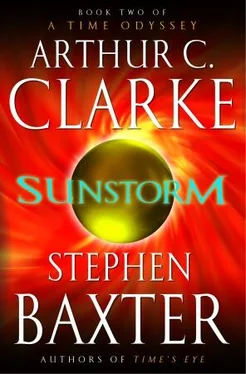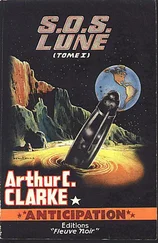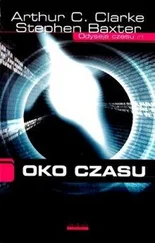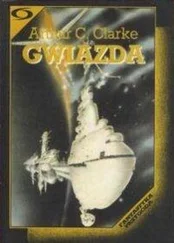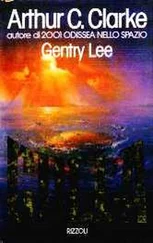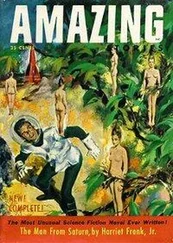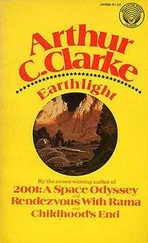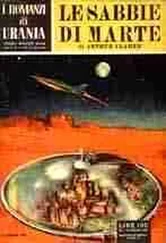For one thing the L1 point wasn’t really stable at all, but only semi-stable: if you knocked that point mass out of position it would tend to drift back to its place along the line of the Earth—sun radius, but would happily float away from the line in any other direction. So you needed to add station-keeping mechanisms, such as rocket thrusters, to hold the shield in place.
And then, of course, the shield was not a point mass, but an extended object large enough eventually to shadow the whole Earth. Only the shield’s geometric center, intersecting the Earth—sun line, could be properly balanced at the L1 point. All other points were drawn toward the center, and given time the shield would have crumpled in on itself. Making it rigid would have raised the mass unfeasibly. The problem was to be overcome by giving the shield a slow rotation. The spinning was stately, at only four revolutions per year— “as if God is twirling His parasol,” as Mikhail described it—but enough to keep the shield rigid.
But the rotation created other problems. Docking with a spinning object in space, even one as slow moving as the shield, was a lot more tricky than with a stationary object. More seriously, by being spun up, the shield would become a huge gyroscope. As it followed its orbit between Earth and sun it would tend to keep the same orientation in space—and so, over a year, it would tip its face away from the sun—Earth line, making it useless as a parasol.
Meanwhile there were other forces to consider besides gravity. Sunlight itself, a rain of photons, exerts a pressure on every object it touches. It is too gentle a force for human senses to detect on an upraised hand, but it would be enough to drive a yacht with filmy kilometer-wide sails from world to world—and it was certainly enough to exert a significant force on an object as large as the shield. There were other complications too, such as perturbation by the gravity fields of the Moon and the other planets, and a tweaking by Earth’s own magnetic field.
To cope with all this, the shield’s surface was to be made adjustable. Panels could be opened and closed in careful patterns, so that the gentle pressure of sunlight could be harnessed to turn the shield. It was an elegant solution: sunlight itself would be used to keep the shield properly positioned.
But to maintain its station in this environment of multiple and constantly changing forces, the shield itself had to be smart enough to be aware of its position in space, and able to adjust itself dynamically. Ideally every square centimeter of the shield would know all about the forces acting on it and on the shield as a whole, and would be able to compute how it should position itself in response.
This distributed, interconnected intelligence was to be achieved by the manufacture of a “smartskin.” The shield’s epidermis, less than a micrometer thick, would not just be a reflective skin but would be packed with circuitry. The local smartness, interconnected, would of course add up to a total powerful intelligence. The completed shield would, it was thought, be the smartest single entity humankind had yet constructed—smarter even, probably, than Aristotle, the only uncertainty coming because nobody knew quite how smart Aristotle was.
So much for the design, complicated enough in itself. The implementation was something else.
The manufacture of the smartskin was one headache today; there weren’t enough nano-factories to turn it out in time. But even more serious was the problem caused by the pressure of sunlight. Although it could be used for active position control, its very existence caused a fundamental difficulty—which was the day’s second showstopper.
***
“Let’s go through it step by step,” Bud said. “The sunlight presses on the reflective face of the mirror. The light pressure acts against the sun’s gravity—so it’s as if the sun’s gravity is effectively reduced, and the L1 balance point is moved toward the sun along the Earth—sun line.
“Now, we’re trying to minimize the shield’s design mass. But the lighter the shield is, the more the sunlight can push it back. And the farther it drifts toward the sun, the bigger the shield has to be to shade the whole Earth. So its mass actually starts increasing again … These two effects counteract to provide a minimum solution. Am I right? For a given thickness of film there is a theoretical minimum mass for the shield, below which there is no feasible design solution.”
Siobhan said, “And without the Chinese—”
“We can’t meet that minimum,” Rose said with a kind of grim pleasure.
The problem was a shortfall of heavy-lift capacity. Although the Chinese government had initially declined to participate in the shield program, Miriam Grec had been sure that after enough emollient diplomacy, and a little horse trading, the Chinese would come on board. Miriam had actually instructed Siobhan to factor into her plans the availability of the Chinese fleet of Long March heavy-lift boosters.
Well, Miriam Grec had proven to be right about many things, but not about the Chinese. Their resistance to participation had not altered one jot, and their space launch capabilities were being dedicated, it seemed, to some secretive scheme of their own.
Whatever the Chinese were up to didn’t matter to Siobhan. All she did care about was that despite months of frantic redesign they had failed to come up with a feasible solution: without the Chinese and their Long March boosters—and maybe even with them, said the pessimists—there just wasn’t any way to get that minimum mass to L1 in time.
Siobhan knew that momentum was everything for this project. The shield was hugely, horribly, ruinously expensive: the project absorbed more than the net GDP of the United States, and therefore a respectable fraction of the whole world’s economic output. Indeed the shield was thought to be humankind’s single most expensive project in real terms since the “project” of winning the Second World War. The money didn’t come out of nowhere, and many other programs, notably climate-change mitigation efforts in the desiccated heart of Asia and drowning Polynesia, were being put on hold, to predictable protests.
As the project became more real, it was provoking sincere political anger. In a way Siobhan welcomed that; it meant that more than a year after Alvarez’s Christmas announcement, the “phony war” was coming to an end, and people were starting to believe enough in the sunstorm to care what was being done about it. Of course there were technical problems to solve; what they were attempting had never been done before. But Siobhan knew that if she allowed a hint of doubt to seep out of her management structure, it would soon erode the fragile political consensus behind the project—an infrastructure every bit as essential to the shield as the glass struts and booms being shipped up from the Moon.
Siobhan massaged her temples. “So we find another way to do it. What can we change?”
Rose ticked points off on her strong fingers. “You can’t change the basic forces involved. You can’t change the gravity fields of sun or Earth, or the pressure per square centimeter of sunlight. You can’t shrink the shield. If it was transparent, sunlight would pass straight through the shield without troubling it, of course.” She smiled. “But then there would be no point in building it in the first place, would there?”
“There must be something, damn it,” Siobhan snapped.
She looked around at the softscreens that lined the walls of the room. The faces that peered back at her, her senior project managers, were projected from various corners of the Earth, the Moon, and L1 itself. The expressions of Bud and Mikhail Martynov as always radiated sympathy and support. Rose was wearing her usual it-can’t-be-done scowl. Many of the others were more reserved. Some may actually have been grateful to Rose and her showstoppers, as she gave them something to hide their own issues behind.
Читать дальше
